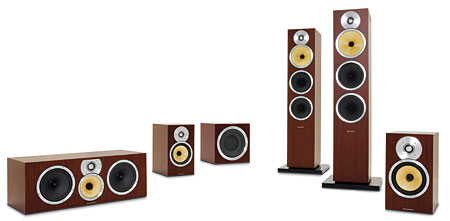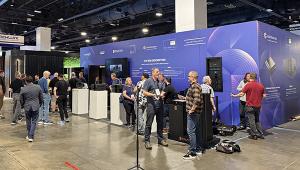B&W CM9 Speaker System
Well Centered

These days, most major speaker manufacturers know how to produce a good speaker. But only a few manage to hit all the marks simultaneously: great engineering, great sound, and fair pricing. British speaker manufacturer Bowers & Wilkins has long been a leader in that hunt.
While the research, development, and design for B&W speakers remains firmly entrenched in Worthing, England, the company has now followed most speaker manufacturers by moving much of its production to China. Only the flagship 800 Series speakers are still manufactured in the U.K.
While I have mixed feelings about the industry-wide stampede to Far East production, I can’t deny that it has significantly increased the value quotient of audio (and video) gear. In 2008, I reviewed a system that featured the B&W 683 floorstanding speakers for UltimateAVmag.com. Despite the fact that this speaker is the top model in the company’s least expensive line of freestanding designs, and it turned in a set of middling measurements, the 683’s sound blew me away. I used them in my reference system for months after I’d completed that review. I only moved them when a new speaker system under review demanded the space.
B&W’s CM9, the newest model in its CM line, continues many of the 683’s basic design elements, including a similar midrange and tweeter. It also adds superior fit and finish. The complete surround package is enhanced by a new, better-integrated center channel design than the 600 series offers.
Top Tech
The speaker system here, which B&W dubs the CM9 Theatre, includes the CM9 floorstanders for the left and right front, the CM Centre 2, a pair of CM5s for the surrounds, and the ASW 10CM subwoofer.
Beginning at the bass end, the ASW 10CM sub’s 10-inch paper/Kevlar-coned driver takes up almost the entire front baffle of the compact cabinet. A 500-watt Class D amp provides the needed horsepower, and at 42 pounds, the sub is relatively easy to schlep around in order to find the optimum placement.
It includes the usual subwoofer inputs and controls: line- and speaker-level in, low-pass adjustment from 25 to 140 hertz, low-pass filter defeat, and 0- and 180-degree phase settings. A three-step Bass Extension control sets the low-frequency limit (the rated –6-decibel point) to 18 Hz, 23 Hz, or 28 Hz. Why would you choose less than maximum extension? You’d do this to increase perceived maximum volume before reaching an unacceptable level of distortion, in most cases. When reproducing content with truly deep bass, with less bottom-end extension, less driver excursion is needed for a given level, and the less you demand of a speaker, the easier its job. However, I bit the bullet and risked a little extra distortion (playing loud enough wasn’t an issue in my room). I did all of my listening in the max extension setting. In addition, a two-position EQ switch contours the response for either in-corner or out-of-corner placement. I used the ASW 10CM near the front wall and away from the room corners.
- Log in or register to post comments

























































